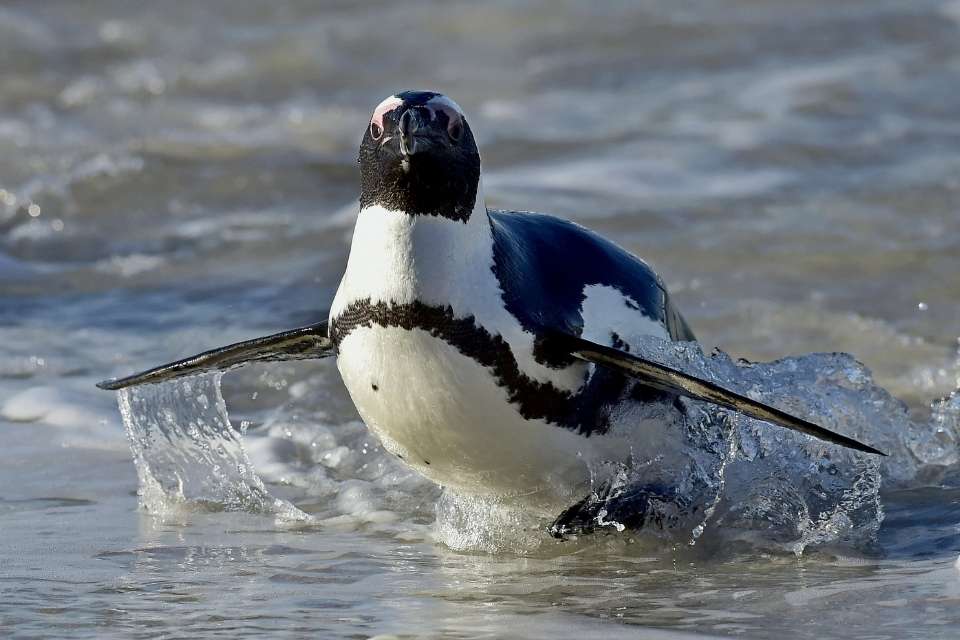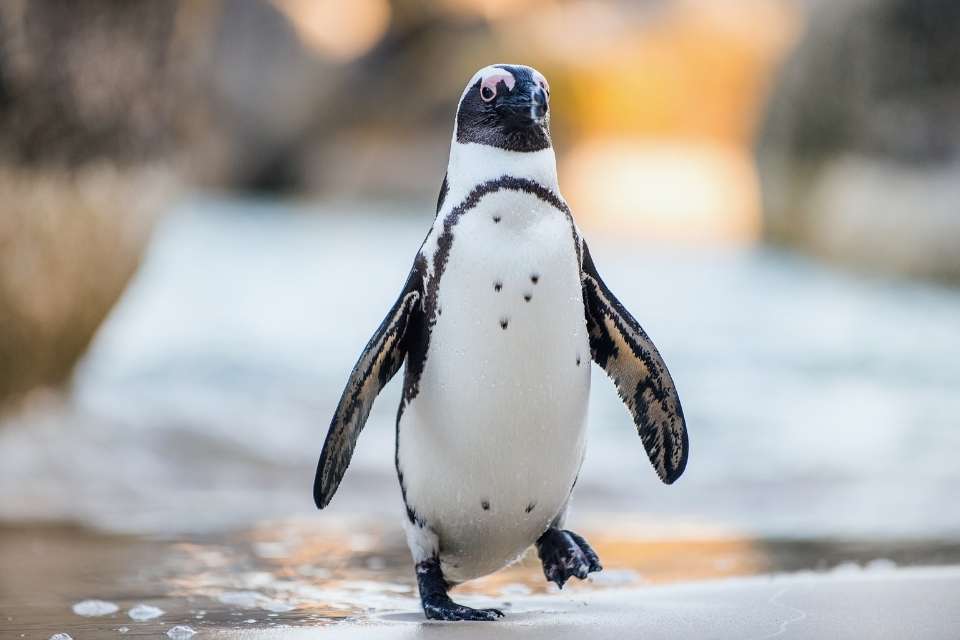Penguins are fascinating creatures that capture our imagination with their unique appearance and charming behaviors. As humans, we may wonder about the potential dangers of encountering these incredible beings.
In this article, we will explore the topic of penguins and their behavior towards humans, specifically addressing the question: Do penguins attack humans?
It is important to note that penguins are generally not considered a threat to humans. However, there are instances where penguins can become aggressive if they feel threatened or provoked, particularly during the breeding season. While their sharp beaks and claws can cause minor injuries, it is highly unlikely for penguins to cause serious harm to humans.
To maintain safety, it is essential to approach penguins with respect, caution, and observance of their personal space.
In this article, we will delve deeper into penguin-human interactions, explore penguin behavior and aggression, discuss various penguin species and their characteristics, examine their natural predators, and provide essential safety precautions for encounters with these magnificent creatures.
Let us embark on this educational journey to understand the fascinating world of penguins.
Key Takeaways:
- Penguins are generally not a threat to humans, but can become aggressive if they feel threatened or provoked.
- Penguins possess sharp beaks and claws, but it is unlikely for them to cause serious harm to humans.
- Respecting penguins’ personal space and maintaining caution can help prevent aggression.
- Understanding penguin behavior and characteristics aids in fostering coexistence.
- Conservation efforts are crucial to protect penguins and their habitats for future generations.
Interactions Between Penguins and Humans
Penguins and humans have the opportunity to engage in various settings, such as zoos and wildlife encounters. It is essential for us to approach these interactions with caution and prioritize the safety of both penguins and ourselves.
When interacting with penguins, we must remember to maintain a safe distance and respect their personal space. This involves refraining from invading their environment or getting too close.
By giving them the space they need, we minimize the potential for stress and anxiety that can lead to aggression.
Furthermore, it is important to be mindful of our behavior during these interactions. Loud noises and bright lights can agitate penguins and disturb their natural behavior.
Maintaining a calm and quiet demeanor not only ensures their well-being but also allows us to observe and appreciate their natural behaviors in their most authentic form.
It is important to recognize that our actions extend beyond direct interactions. Human activities such as pollution, habitat loss, and climate change can have detrimental effects on penguins and their overall survival.
By taking steps to reduce our impact on their environment, we contribute to the preservation of these incredible creatures.
“Respecting the personal space of penguins and minimizing disturbances during interactions is crucial for their well-being and our ability to observe their natural behaviors.”
Through responsible and considerate interactions, we can foster a harmonious coexistence with penguins and contribute to their long-term conservation.
By respecting their boundaries, not only are we promoting their safety, but we are also ensuring that future generations can continue to appreciate and marvel at these magnificent creatures.
Penguin Behavior and Aggression
Penguins are fascinating creatures, known for their unique behavior patterns. One of the most remarkable behaviors is their marching and huddling together for warmth and protection. This behavior helps them survive in the harsh Antarctic environment.
While penguins are generally known for their peaceful nature, some species may exhibit aggression, particularly during territorial disputes. These disputes can arise when penguins fight over resources or defend their nesting areas.
Penguins utilize their beaks, wings, and vocalizations to communicate and establish dominance.
“Penguins are highly social animals, and territorial disputes are a natural part of their behavior. These disputes can occur both on land and in the water, as penguins value their territories and strive to protect them.”
However, it is important to note that penguin aggression is mostly directed towards other animals and not humans. Penguins generally pose no threat to people unless they feel threatened or provoked.
When encountering penguins in their natural habitat, it is crucial to observe from a safe distance and avoid any behavior that may agitate or distress them.
Penguin Behavior in Territorial Disputes:
- Penguins use their beaks to peck and bite their opponents during fights.
- They may also flap their wings aggressively to intimidate rivals.
- Some species emit loud vocalizations, such as honks, brays, or trumpet-like calls, to assert dominance.
Understanding penguin behavior and territorial disputes is essential for both researchers and conservationists to ensure the well-being of these captivating birds. By respecting their space and minimizing disturbances, we can coexist with penguins and contribute to their preservation.
Penguin Species and Characteristics
Did you know that there are 18 distinct species of penguins? Each species possesses its own unique characteristics and adaptations that allow them to thrive in their specific habitats.
One notable species is the Emperor Penguin, renowned for its impressive size and incredible ability to withstand extreme cold temperatures. These majestic birds can reach up to 4 feet in height and are known for their remarkable parental care, with males incubating the eggs while females go out to feed.
Another remarkable penguin species is the Adelie Penguin, famous for its playful behavior and exceptional swimming abilities. These small but resilient creatures are adept at diving and hunting for food in the frigid waters of Antarctica.
Lastly, we have the Little Penguin, which holds the title as the smallest penguin species in the world. Found in Australia and New Zealand, these charming birds are known for their adorable appearance and charismatic behavior.
Understanding the unique characteristics and adaptations of different penguin species is crucial for their conservation and protection. By preserving their habitats and implementing effective conservation strategies, we can ensure the continued survival and well-being of these beloved creatures.
Predators of Penguins
Penguins, like any other species, have natural predators that they must contend with in their habitats. These predators include seals, birds, and other animals.
In the Water and on Land: Leopard Seals and Fur Seals
Leopard seals and fur seals are common predators of penguins, both in the water and on land. These powerful and agile creatures can swiftly attack penguins, especially when they are swimming or resting near the shoreline.
“Leopard seals are known for their stealthy hunting techniques and their ability to prey on penguins in the water. They can launch explosive attacks, catching penguins off guard.”
Predatory Birds: Skuas and Gulls
Predatory birds, such as skuas and gulls, also pose a significant threat to penguins, particularly the young or weak individuals. These birds are opportunistic hunters and often target penguin chicks, taking advantage of their vulnerability.
“Skuas and gulls use their aerial agility to snatch penguin chicks, causing distress and disruption in their colonies. This predation can have a significant impact on the penguin population.”
Penguin Defense Mechanisms
Penguins have developed various defense mechanisms to protect themselves from predators. One such defense mechanism is their ability to huddle together in large groups. This strategy provides safety in numbers, making it more difficult for predators to single out individual penguins.
Penguins also utilize their wings and beaks to fight back against attackers. With their strong flippers, they can strike swift and forceful blows, deterring potential predators and defending their territories.
“Penguins can fiercely defend themselves using their beaks and wings, leveraging their physical strength to ward off predators and protect their nests.”
However, human activities that disrupt penguin habitats can indirectly contribute to their vulnerability to predators. It is important for us to understand and appreciate the delicate balance of these ecosystems and take measures to protect penguins and their habitats.
Conclusion
While penguins are generally not dangerous to humans, it is important to approach them with caution and respect in order to minimize any potential risks. As predators in their natural habitats, penguins have sharp beaks and claws that can cause minor injuries if they feel threatened.
Therefore, it is crucial to follow proper safety precautions and maintain a safe distance during penguin-human encounters.
Understanding penguin behavior and characteristics can help us foster coexistence and contribute to conservation efforts. By respecting their personal space and avoiding invasive behavior, we can ensure both our safety and the well-being of penguins in their natural environments.
It is important to remember that penguins play a vital role in their ecosystems, and their protection is essential for the future generations to enjoy their wildlife encounters.
By implementing human safety precautions and promoting responsible wildlife tourism, we can create a positive impact on penguin conservation.
Let us continue to learn, appreciate, and protect these incredible creatures, ensuring their habitats remain preserved and their populations thrive for years to come.
FAQ
Do penguins attack humans?
Penguins are generally not considered a threat to humans, but they can become aggressive if they feel threatened, especially during the breeding season. While penguins have sharp beaks and claws that can cause minor injuries, they are unlikely to cause serious harm.
How should humans interact with penguins?
It is important for humans to maintain a safe distance and respect the personal space of penguins. Loud noises, bright lights, and invasive behavior can cause stress and anxiety in penguins, leading to potential aggression. Proper hygiene and safety measures should also be taken to prevent the transmission of diseases from penguins to humans.
Why do penguins display aggression?
While not all penguins display aggressive behavior, some species may engage in fights over resources or territory. Penguins use their beaks, wings, and vocalizations to defend themselves and their territory. It is important to understand that aggression in penguins is mostly directed towards other animals and not humans.
What are some notable penguin species?
There are 18 known species of penguins, each with unique characteristics and adaptations to their respective habitats. Some notable species include the Emperor Penguin, Adelie Penguin, and Little Penguin.
What are the predators of penguins?
Penguins have natural predators, including seals, birds, and other animals. Leopard seals and fur seals are common predators that can attack penguins in the water or on land. Predatory birds like skuas and gulls also pose a threat to penguins, particularly the young or weak ones.
How can humans ensure their safety during penguin encounters?
While penguins are generally not dangerous to humans, it is important to approach them with caution and respect to minimize any potential risks. Proper safety precautions, such as maintaining a safe distance and avoiding invasive behavior, should be followed during penguin-human encounters. Understanding penguin behavior and characteristics can help foster coexistence and conservation efforts.


